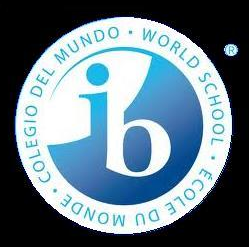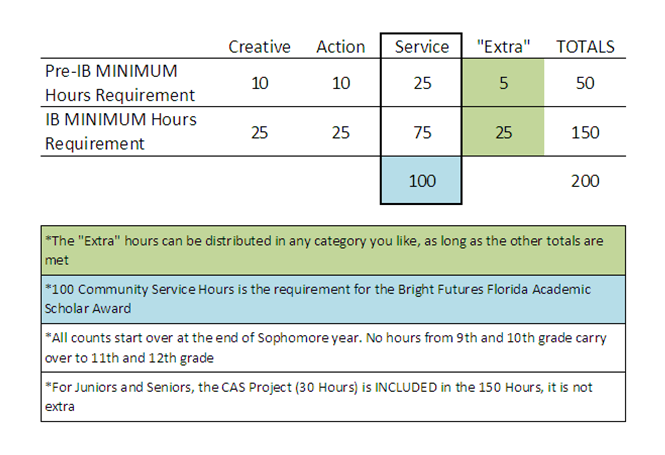All About CAS: What You Need to Know
CAS stands for Creative, Action, and Service activities
The CAS hours component is all about getting students to broaden their horizons outside of the classroom. Some CAS domains may be eaiser for you than others. But that’s the point! But that's what it's all about; stepping out of your comfort zone and pushing your own limits just a little bit further... THIS IS A GRADUATION REQUIREMENT!
CAS is all about personal growth
You will be asked to set a goal for yourself and plan ahead for what learner outcomes you hope to achieve in this activity. (See “What are your goals?”). This must be included in your reflection. Your reflection must clearly demonstrate learning. (See “How To Write Your Reflection”). So, instead of doing several one-time activities, find something you can commit to and grow with.
CAS stands for Creative, Action, and Service activities
The CAS hours component is all about getting students to broaden their horizons outside of the classroom. Some CAS domains may be eaiser for you than others. But that’s the point! But that's what it's all about; stepping out of your comfort zone and pushing your own limits just a little bit further... THIS IS A GRADUATION REQUIREMENT!
CAS is all about personal growth
You will be asked to set a goal for yourself and plan ahead for what learner outcomes you hope to achieve in this activity. (See “What are your goals?”). This must be included in your reflection. Your reflection must clearly demonstrate learning. (See “How To Write Your Reflection”). So, instead of doing several one-time activities, find something you can commit to and grow with.
CAS Procedures:
1. Find an activity
2. Get a blank CAS form from either your homeroom teacher or Mrs. Smith and fill out the top portion, including your name, class, type of activity, name of organization and a brief description of what you'd like to do, and estimated number of hours.
3. Get your activity PRE-APPROVED by BOTH a parent or guardian AND either your homeroom teacher or Mrs. Smith. Have your parent/guardian sign FIRST!
4. Complete your activity, and have the supervising adult (not a parent or relative!) initial next to your hours you logged, verifying you were there.
5. Once the activity is completed, have the supervising adult fill out the bottom portion of the form, evaluating your work.
6. Complete the BACK of the CAS form: Write a brief essay about what you learned and which specific objectives on the back of the form you met during this activity. Don't expect to meet all 8 in one activity! But just keep in mind you will have to have met all 8 to fulfill the requirement.
7. Turn the form in to your homeroom teacher.
Don't lose your form! It is recommended that you make copies of all your forms just in case!
1. Find an activity
2. Get a blank CAS form from either your homeroom teacher or Mrs. Smith and fill out the top portion, including your name, class, type of activity, name of organization and a brief description of what you'd like to do, and estimated number of hours.
3. Get your activity PRE-APPROVED by BOTH a parent or guardian AND either your homeroom teacher or Mrs. Smith. Have your parent/guardian sign FIRST!
4. Complete your activity, and have the supervising adult (not a parent or relative!) initial next to your hours you logged, verifying you were there.
5. Once the activity is completed, have the supervising adult fill out the bottom portion of the form, evaluating your work.
6. Complete the BACK of the CAS form: Write a brief essay about what you learned and which specific objectives on the back of the form you met during this activity. Don't expect to meet all 8 in one activity! But just keep in mind you will have to have met all 8 to fulfill the requirement.
7. Turn the form in to your homeroom teacher.
Don't lose your form! It is recommended that you make copies of all your forms just in case!
Documents & Files
CAS Guidelines 2010
How to Write your Reflection
What Are Your Goals?
How to fill out your CAS Form
CAS Powerpoint for Freshmen
How to Write your Reflection
What Are Your Goals?
How to fill out your CAS Form
CAS Powerpoint for Freshmen
Strawberry Crest High School
IB Program


CAS Information
Rules

For 9th and 10th graders, the Pre-IB requirement is 50 hours before the end of the 10th grade year. 25 must be service, 10 must be creative, and 10 must be action, with the remaining 5 hours in any category you like.
For 11th and 12th graders, the requirement is 150 total hours, 50 service hours, 35 creative hours, 35 action hours, and the remaining 30 hours in any category you like.
Juniors are also required to complete a CAS Project, consisting of at least 30 hours (4-6 weeks) and covering TWO CAS domains (Either Service + Action or Service + Creative.)
For 11th and 12th graders, the requirement is 150 total hours, 50 service hours, 35 creative hours, 35 action hours, and the remaining 30 hours in any category you like.
Juniors are also required to complete a CAS Project, consisting of at least 30 hours (4-6 weeks) and covering TWO CAS domains (Either Service + Action or Service + Creative.)
But CAS is about more than counting hours….
Instead, how many WEEKS, MONTHS, or YEARS can you put into an activity? Since the goal is personal growth, students should stay away from one-time activities and choose activities that they can grow with. In actuality, they should have a lot more than 150 hours.
Since goals are so important with CAS, you may find yourself wanting to learn independently at home. This is ok, IF, (AND ONLY IF)you can provide tangible evidence on the activity you’re doing on your own, not only to prove that the activity was completed by you and not someone else, but also to show evidence of your growth and learning. Include this evidence in your reflection! Examples of evidence may include but aren’t limited to:
a. Photos, videos, sound bytes of your artistic work, including some “before,” “during,” and “after” snapshots.
b. Tracking sheets of your athletic/action goals
i. Miles ran, distance, measurements, etc…
c. Blog postings
d. E-mails
e. Business cards
f. Thank-you notes and/or letters from the organization you worked with
Instead, how many WEEKS, MONTHS, or YEARS can you put into an activity? Since the goal is personal growth, students should stay away from one-time activities and choose activities that they can grow with. In actuality, they should have a lot more than 150 hours.
Since goals are so important with CAS, you may find yourself wanting to learn independently at home. This is ok, IF, (AND ONLY IF)you can provide tangible evidence on the activity you’re doing on your own, not only to prove that the activity was completed by you and not someone else, but also to show evidence of your growth and learning. Include this evidence in your reflection! Examples of evidence may include but aren’t limited to:
a. Photos, videos, sound bytes of your artistic work, including some “before,” “during,” and “after” snapshots.
b. Tracking sheets of your athletic/action goals
i. Miles ran, distance, measurements, etc…
c. Blog postings
d. E-mails
e. Business cards
f. Thank-you notes and/or letters from the organization you worked with
- Activities cannot be completed during the school day and may not count for a grade. A student may not be compensated in any way for a CAS activity.
- Activities cannot promote any religious or political beliefs.
- Any single activity can only coun for ONE Category, Even though sometimes, it could be either. For example, choreographing a dance for a play may be either creative or action, but not both at the same time.
- An activity cannot address more than one social issue at a time.
- All activities must be supervised by an adult that is NOT a parent or guaridan! If a student chooses to complete an activity at home, their homeroom teacher can be their supervisor as long as they provide clear evidence to the teacher to demonstrate what they learned through the activity.